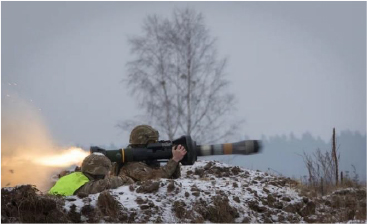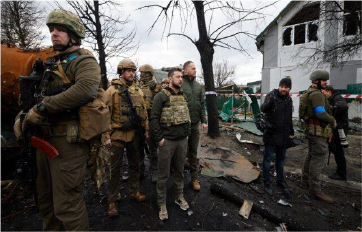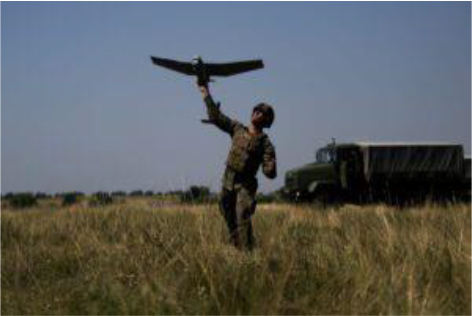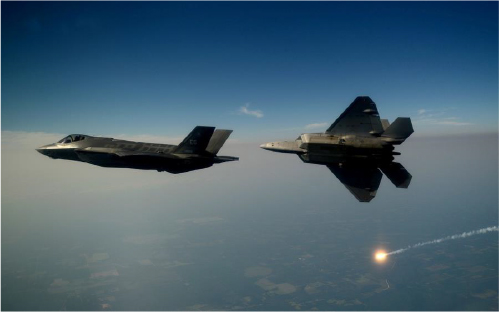



In a stunning move on June 1, 2025, Ukraine unleashed “Operation Spider’s Web”, a daring, long-range drone attack that reportedly crippled up to a third of Russia’s strategic air force, inflicting an estimated $7 billion in damage.
This event signals a pivotal moment in modern warfare and draws parallels to the 1940 Battle of Taranto, where carrier-based aircraft dramatically reshaped naval strategy. Much like then, today’s advancements in drone delivery and intelligence systems are fundamentally rewriting the rules of air power.

Operation Spider’s Web was allegedly executed using 150 small drones and modular launchers, which were deployed discreetly from trucks near air bases, bypassing Russian defenses and allowing them to strike critical aircraft such as the A-50 early warning radar platform, and the Tu-95MS strategic bomber. The operation leveraged open-source drone software, standard 4G/LTE networks, and AI-enhanced targeting to execute precise, long-range attacks, showcasing a potent hybrid warfare model, seamlessly blending human oversight with autonomous capabilities.
Key Implications:
Operation Spider’s Web underscored the need for immediate adaptation to a battlefield where cheap, innovative systems can disrupt traditional military dominance. Global powers must invest in countermeasures, surveillance, and flexible strategies to counter this evolving threat landscape.
In 1940, Britain stood alone against Nazi Germany and Italy after the fall of France. Outnumbered and outgunned, the British achieved a remarkable naval victory using innovative technology; the aircraft carrier HMS Illustrious launched an air raid on the Italian fleet at Taranto harbor, disabling three battleships and other ships without the Italians ever sighting the attackers.

A year later, Britain dispatched HMS Prince of Wales and HMS Repulse to deter Japanese advances in Singapore. Despite the Taranto success, British leaders doubted air attacks could sink battleships at sea. Relying on maneuvers and anti-aircraft guns, they underestimated the threat: Japanese torpedo bombers swiftly sank both ships, exposing the vulnerability of battleships—once the unchallenged masters of the sea—to small, agile aircraft. Overnight, air power reshaped naval warfare, rendering battleships nearly obsolete.
Fast forward to 2025, and a parallel shift may have unfolded. Russia has long used its strategic bombers, capable of launching nuclear-armed cruise missiles, to strike Ukraine from vast distances. Ukraine countered by targeting these bombers on the ground with drones, but Russia relocated them out of reach. Forced to innovate, Ukraine adapted, echoing the revolutionary impact of Taranto and signaling a new era in military technology.
If Ukrainian claims are accurate, the attack on June 1st was a stunning operational success – targeting bases from Murmansk in the Arctic, to Irkutsk near Mongolia – proving that Russia’s vast geography offered no protection.
The operation showcased the future of warfare. To overcome Russia’s air defenses and distance advantage, Ukraine employed low-cost drones smuggled in trucks, launched remotely near targets, likely controlled via local telecom networks with some autonomous features. Many targeted aircraft are no longer produced, making losses irreplaceable. Ukraine estimates damages at $7 billion, while the operation’s cost was a fraction of that—mirroring the cost-effective disruption of Russia’s Black Sea fleet. This attack confirmed the feasibility of an “anti-Air Force” strategy, where inexpensive, battery-powered drones neutralized Russia’s costly, sophisticated bombers, transforming warfare overnight.
Planning of the operation reportedly began over 18 months earlier, with Ukrainian intelligence smuggling 150 small strike drones, modular launchers, and 300 explosive payloads into Russia via covert routes. Drones were concealed in wooden cabins loaded onto standard cargo trucks, and the Russian civilian drivers, unaware of their cargo, delivered launchers to strategic locations near air bases, such as fuel stations and remote roadsides.

At the designated time, cabin roofs opened remotely, launching drones directly from trucks. This short-range approach bypassed Russia’s layered defenses, including Pantsir and S-300 systems. Russian sources confirmed drones launched from nearby sites, and post-launch truck explosions suggested self-destruct mechanisms to eliminate evidence. Of the 117 drones launched, over 40 aircraft were reportedly hit, including critical A-50 early warning planes and numerous strategic bombers, representing a significant portion of Russia’s strategic missile platforms.
The operation’s success hinged on meticulous planning and deception. By using Russia’s own logistics networks and civilian infrastructure, Ukraine turned Russia’s size against it. The drones’ low cost and high impact underscore a shift toward asymmetric warfare, where small, agile systems can cripple expensive, traditional platforms. This echoes the Taranto raid’s lesson: technological innovation can upend established military hierarchies.
Operation Spider’s Web exemplified a hybrid approach to drone warfare, blending human control, partial autonomy, and likely AI-assisted targeting. While not fully autonomous, the drones leveraged advanced software and connectivity to achieve precision strikes on high-value targets.
The first-person-view (FPV) drones were controlled via Russia’s 4G/LTE networks, enabling real-time video and command transmission over vast distances without local ground stations. This relied on ArduPilot, an open-source autopilot framework, integrated with compact onboard computers (e.g. Raspberry Pi), webcams, and LTE modems. ArduPilot managed flight stability, navigation, and failsafe routines, compensating for network latency and ensuring reliable operation over unstable mobile connections.

Ukrainian teams analyzed aircraft like the Tu-95MS, Tu-22M3, and A-50, using data from preserved examples in Ukrainian museums, which enabled the identification of vulnerabilities such as missile pylons and fuel tank seams. Machine vision models, embedded in the drones’ computers likely assisted operators by recognizing these weak points during final attack maneuvers, enhancing precision and effectiveness.
The operation’s success demonstrated an ongoing revolution in military affairs. Open-source tools like ArduPilot, combined with Ukrainian-developed software and commercial hardware, enabled long-range, internet-based control, essentially utilizing toys to make a strategic deep strike, previously reserved for expensive platforms most militaries could not afford. Success stemmed from organizational brilliance—deep reconnaissance, covert logistics, and exploitation of Russia’s civilian infrastructure—rather than cutting-edge tech alone, allowing Ukraine to strike deep, targeting assets critical to its strategic operations.
The use of Russian telecom networks highlights a broader vulnerability: reliance on civilian infrastructure for military operations. Adversaries can exploit these networks, turning a nation’s connectivity into a liability. The operation’s blend of human oversight, autonomy, and AI underscores the evolving nature of drone warfare, where accessibility and adaptability are as critical as technological sophistication.
Operation Spider’s Web serves as a warning for global militaries, particularly for scenarios like a U.S.-China conflict over Taiwan. As some experts note, a “Pearl Harbor” scenario looms, where U.S. assets—Pacific bases, ships in San Diego or Norfolk, or B-2s in Missouri—could be targeted by drone swarms hidden in shipping containers. Such attacks could coincide with conventional strikes, redefining military “theatres” and exposing vulnerabilities far from primary conflict zones. The urgency to address these threats is critical.

The U.S. military, like Russia’s, centers on expensive platforms: F-22 fighters are valued at $350 million, Ford-class aircraft carriers at $13 billion, M1A1 tanks at $4 million a piece. These could be destroyed by cheap drones, with limited U.S. manufacturing capacity hindering replacement. Ukraine’s raid illustrates this risk, as container ships from China arrive daily, carrying thousands of unchecked containers that could conceal drones.
Defensive measures are urgently needed. Hardened shelters could protect aircraft, while advanced air defenses—guns, jammers, lasers, electromagnetic pulses, or drone interceptors—could counter swarms. Enhanced surveillance of container traffic, both at ports and inland, is essential but challenging, given the volume of global shipping. The U.S. must also rethink force deployment, as concentrated bases and ships at port are prime targets.
Ukraine’s operation highlights the democratization of warfare. Cheap, off-the-shelf drones and open-source software can now challenge state-of-the-art militaries. This shift demands a reevaluation of procurement, favoring resilient, distributed systems over costly, centralized platforms. Militaries must also develop doctrines to counter asymmetric threats, balancing technological innovation with operational agility.
The broader lesson is that no military is immune. Russia’s failure to protect its air force mirrors potential U.S. vulnerabilities. As drone technology proliferates, adversaries—state and non-state—will exploit similar tactics. The time to prepare is now before a surprise attack cripples critical assets in the opening moments of a conflict.
Operation Spider’s Web demonstrated Ukraine’s tactical ingenuity and highlights transformative shifts in warfare, demanding immediate attention from military and political leaders worldwide.
Firstly, the proliferation of affordable, adaptable technologies—FPV drones, open-source software, and AI—is accelerating. Originally designed for civilian use, these tools are now weaponized with devastating effects. Their accessibility to state and non-state actors requires urgent efforts to anticipate, regulate, and counter their use in conflicts and domestic settings.
Secondly, autonomy is advancing rapidly. Current drones rely on semi-autonomous functions for navigation and targeting, but future systems will likely integrate these into fully autonomous platforms capable of independent missions over vast distances. This evolution will challenge existing doctrines, ethical frameworks, and oversight mechanisms, necessitating proactive adaptation.
Thirdly, the growing drone threat exposes vulnerabilities in military and civilian infrastructure. Conventional air defenses are often inadequate against small, precise drones. Militaries must invest in early detection, electronic warfare, and layered physical defenses to protect critical assets.
These trends highlight that technological agility, not just industrial scale, will define future strategic advantage: militaries that invest in resilience, countermeasures, and adaptive doctrines will be best equipped to navigate this evolving battlefield in response to Operation Spider’s Web’s wake-up call. Global powers now need to rethink defense in an era where cheap, innovative systems can upend traditional military dominance.